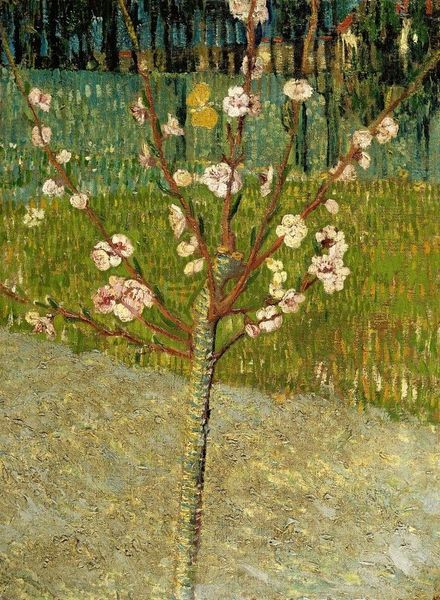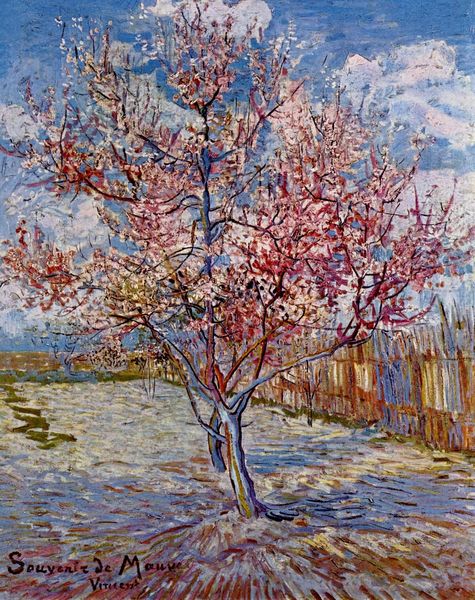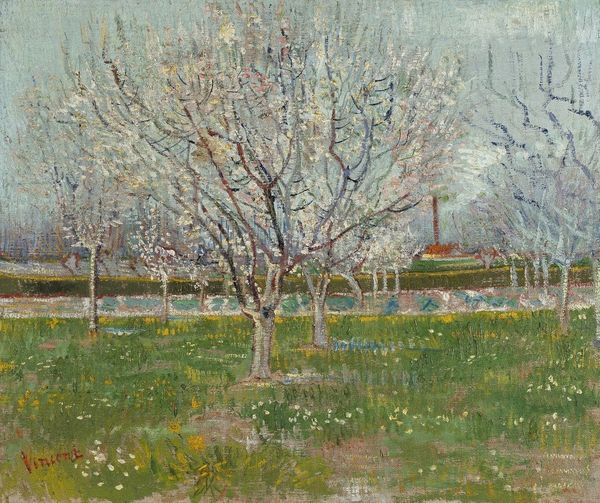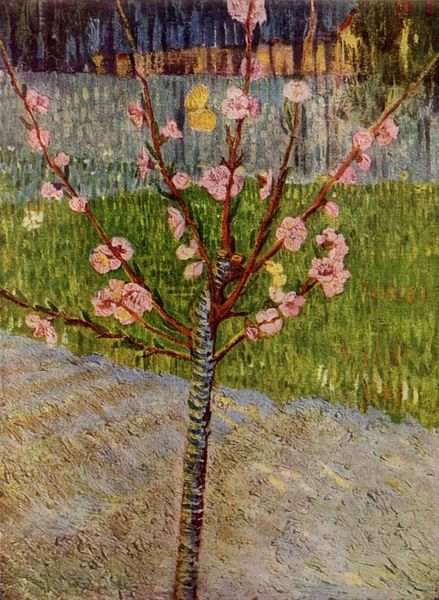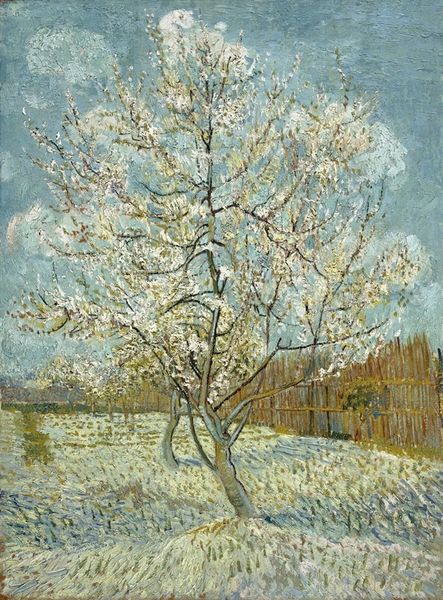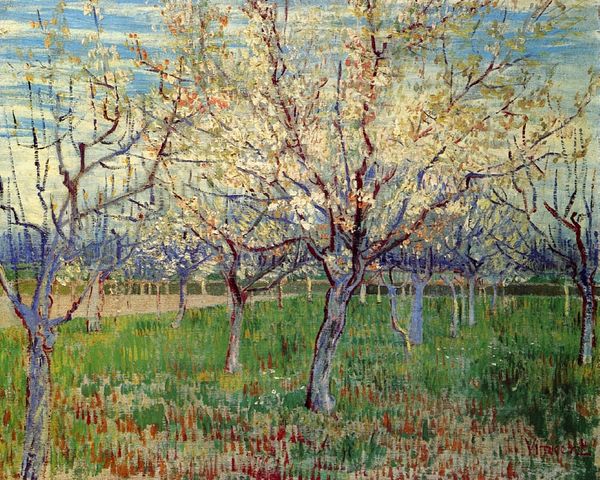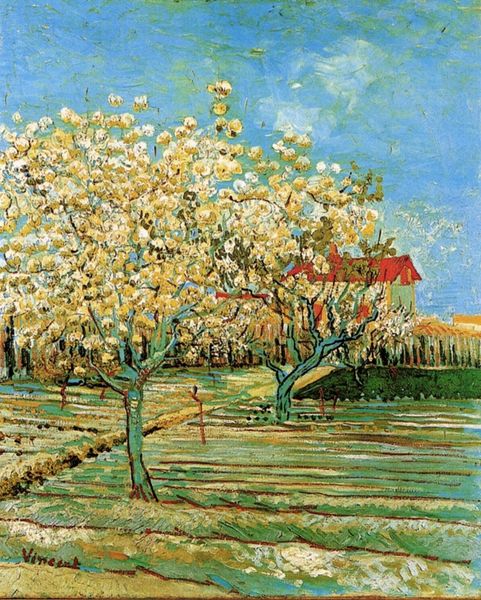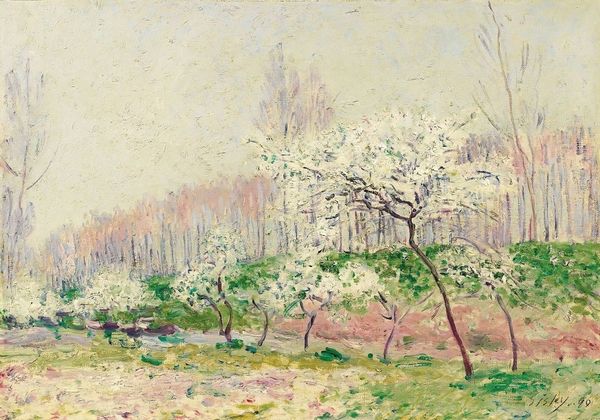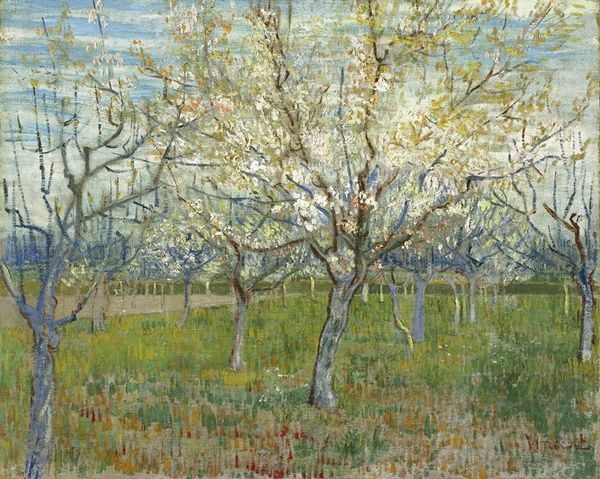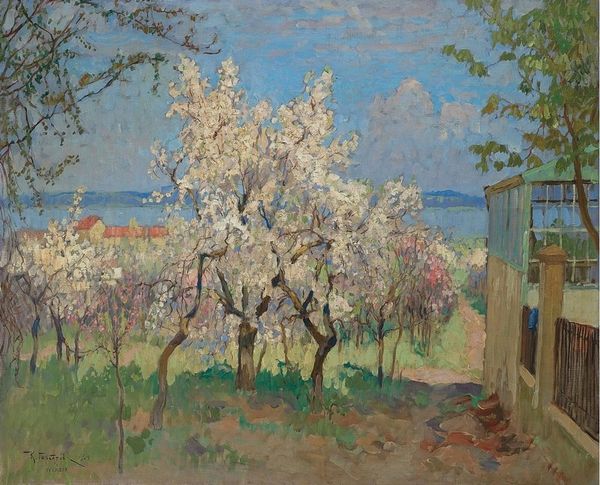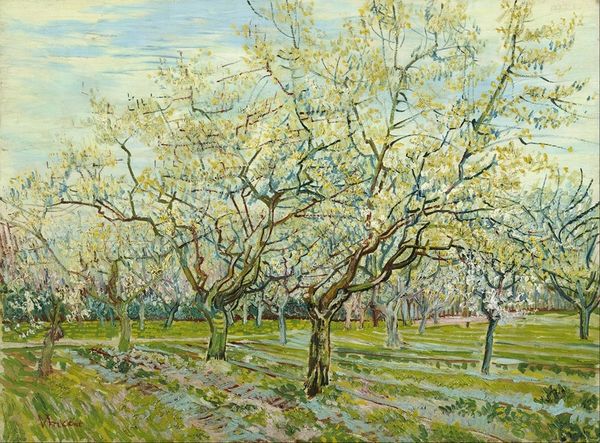
painting, plein-air, oil-paint, impasto
#
tree
#
painting
#
plein-air
#
oil-paint
#
landscape
#
impressionist landscape
#
handmade artwork painting
#
oil painting
#
impasto
#
painting painterly
#
cityscape
#
post-impressionism
Copyright: Public Domain: Artvee
Curator: Here we have Vincent van Gogh's "Small Pear Tree in Blossom," painted in 1888. It's an oil on canvas, rendered *en plein air*, reflecting his exploration of light and color during his time in Arles. Editor: The overwhelming yellow feels like sunbaked hope, almost aggressively optimistic. The impasto is so thick; you can practically feel the sun beating down on the orchard. Curator: Indeed, Van Gogh's use of impasto is central to the work, lending a tactile, almost sculptural quality to the scene. But let’s consider its social context. He arrived in Arles hoping to establish an artistic community, seeking a brotherhood of painters who would revolutionize art. Editor: And the blossoms themselves? Those stark white dabs seem fragile against the ochre backdrop, signaling not just springtime, but potential unrealized, given how ephemeral blossom really is. The scene gives an unsettling tension: optimism fraught with precarity. Curator: That's astute. His move south was partially a rejection of the academic art world of Paris. The blossoming tree, so vividly captured, symbolizes this new chapter, even a form of rebirth, both artistic and personal. Remember also the Japonisme prevalent at the time. Van Gogh found in Japanese prints an inspiration to paint nature directly. Editor: Yes, there’s also something almost desperate about his attempt to connect to nature and brotherhood—was he trying to heal wounds, trying to plant a future for himself? Did his deep yearning actually connect with the working class? Curator: It’s easy to romanticize the relationship between art and social class. However, he depicted peasant life with reverence, even while struggling with his own mental health and social isolation. This tension is inherent to much of his work, blurring lines between romanticization and documentation. Editor: So, are we left seeing this landscape, then, not just as the subjective view of one man, but perhaps an artist struggling to ground himself in tangible ways amid massive societal changes? Curator: Precisely. Looking at it through the lens of art's public role and the politics of imagery enriches our understanding beyond its aesthetic qualities. Editor: It feels so incomplete—a record of trying to bloom amidst structural instability.
Comments
No comments
Be the first to comment and join the conversation on the ultimate creative platform.
